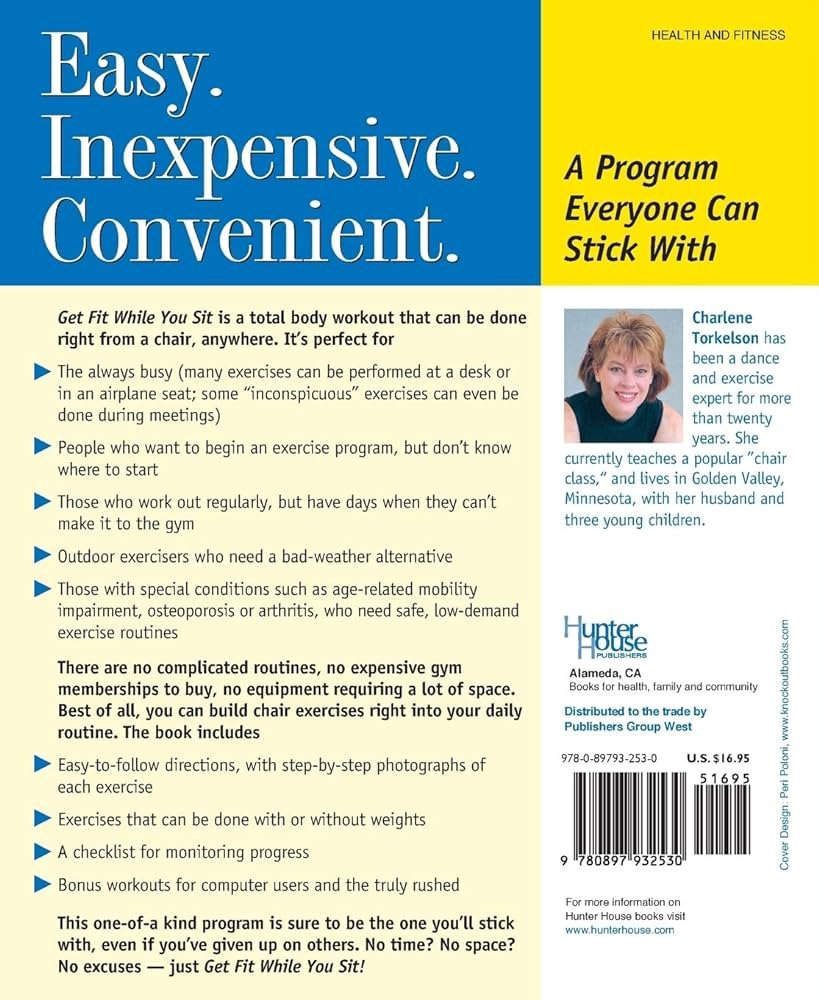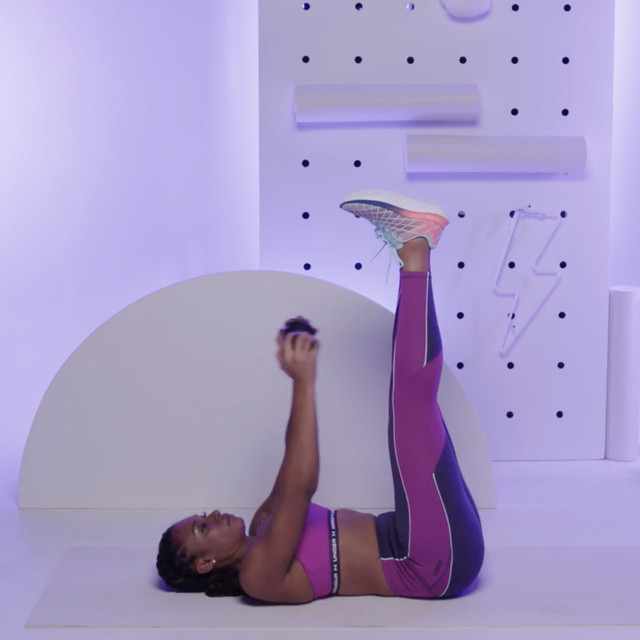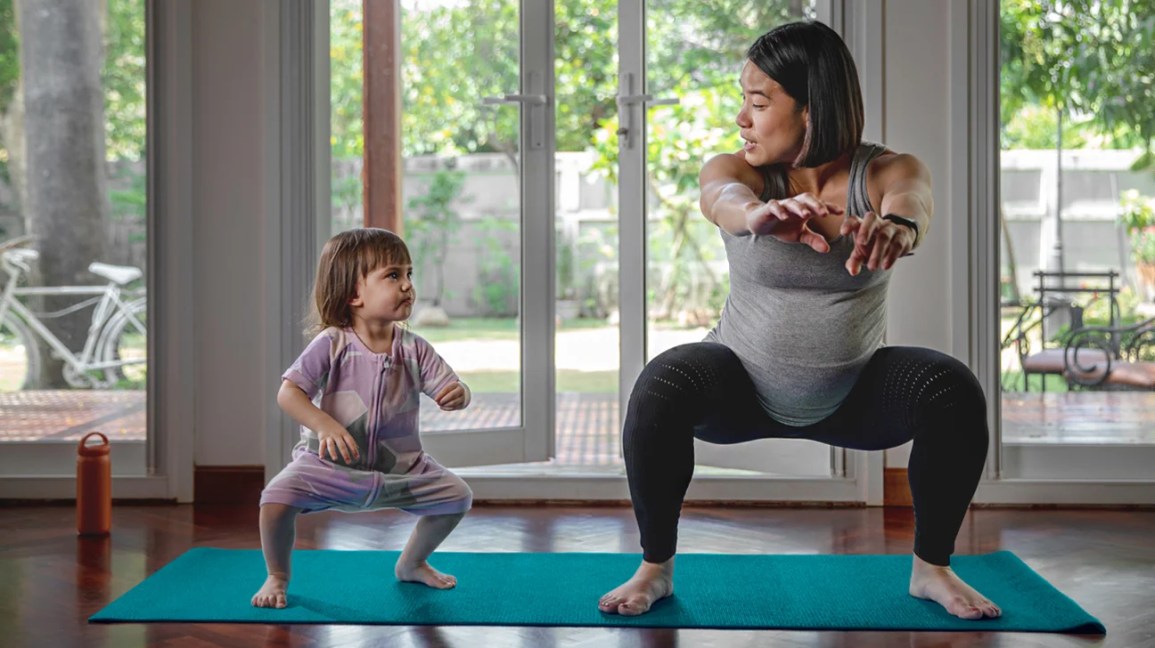Seated and chair exercises offer seniors a safe, low-impact way to stay active. These exercises help improve flexibility, strength, and balance.
Engaging in seated and chair exercises is crucial for seniors who prioritize their health and mobility. Often, as age progresses, traditional workouts become less appealing or feasible due to joint stress or balance concerns. Chair exercises provide a comfortable alternative, allowing older adults to work out in a stable and supported way.
Incorporating these types of exercises into their routine can vastly improve a senior’s quality of life by maintaining muscle tone, enhancing circulation, and boosting overall well-being without placing undue strain on the body. Chair exercises can range from simple leg lifts to upper body stretches, catering to various fitness levels and abilities. By offering a blend of safety and effectiveness, seated exercises are an ideal choice for seniors aiming to stay active and independent.
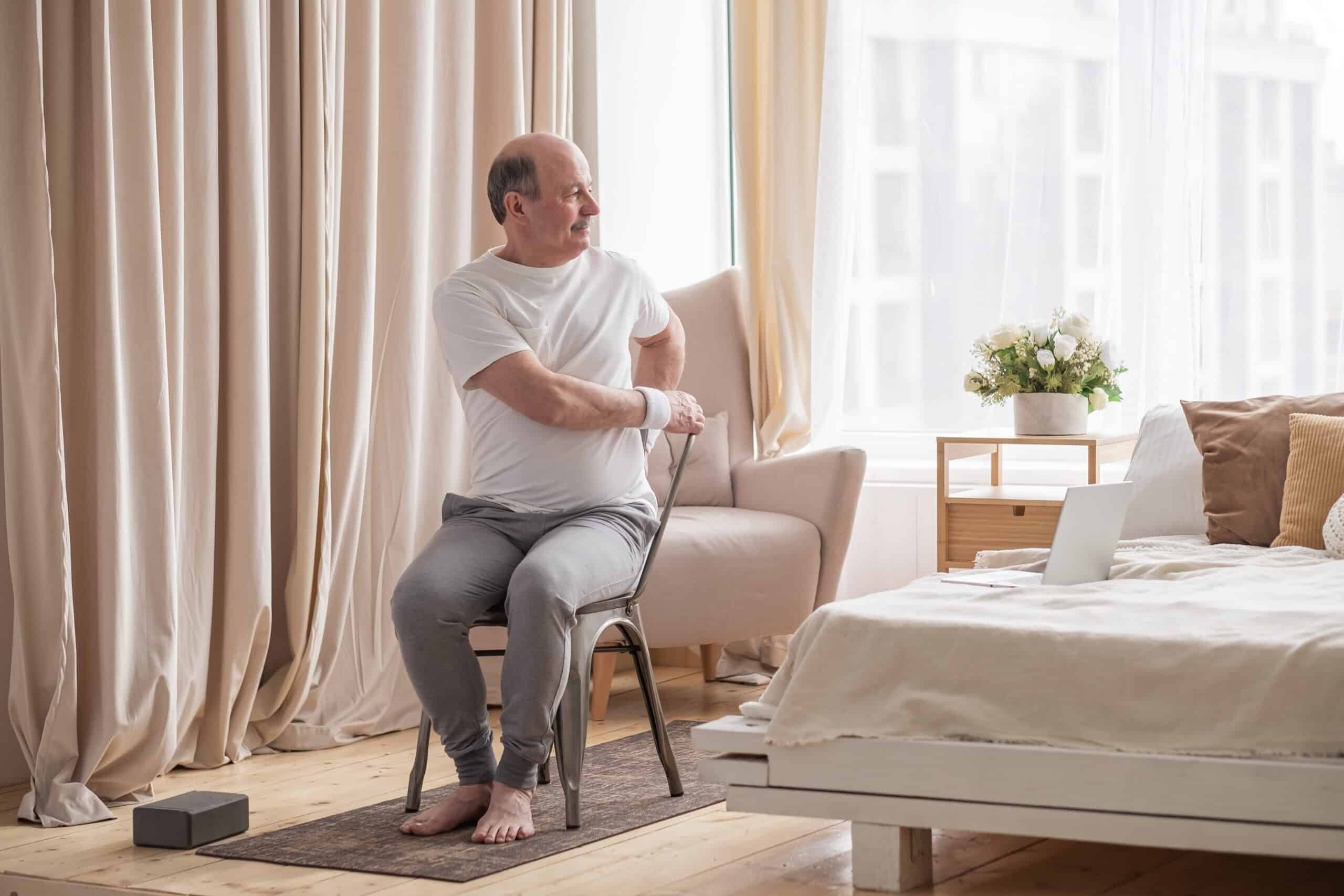
Credit: www.nationalchurchresidences.org
Benefits Of Staying Active As A Senior
Engaging in seated and chair exercises unleashes a myriad of benefits for seniors. Maintaining an active lifestyle is crucial. It helps preserve independence and vitality. Seniors can enjoy improved health, mood, and energy levels. Balance, strength, and flexibility do not have to decline with age. With the right exercises, these can be enhanced or maintained.
Health Improvements With Regular Exercise
Regular physical activity promotes heart health and aids in managing weight. This can reduce the risk of chronic diseases. Here are some key health improvements:
- Lower blood pressure
- Improved cholesterol levels
- Reduced risk of heart disease, stroke, and diabetes
- Better bone density to prevent osteoporosis
- Increased muscle strength and mobility
Enhancing Mental Well-being Through Movement
Moving your body isn’t only about physical health. Exercise contributes to a healthy mind. The connection between physical activity and mental wellness is strong. The benefits include:
- Enhanced cognitive function, including memory
- Elevation in mood, leading to reduced feelings of depression
- Stress relief through the release of endorphins
- Improved sleep quality
- Increased sense of purpose and self-confidence
Adapting Fitness To Your Lifestyle
Adapting fitness to your lifestyle especially as a senior, can be a game-changer. Chair exercises are a fantastic way for seniors to stay active. They provide a safe, low-impact option that fits into any daily routine. This post will explore easy ways to build a routine around chair exercises and incorporate movement into daily activities.
Building A Routine Around Chair Exercises
Chair exercises allow seniors to maintain strength and flexibility without the stress of standing workouts. Here’s how to build a chair exercise routine:
- Choose the right chair: Start with a sturdy chair without wheels and with a straight back.
- Set specific times: Schedule your chair exercises like any other appointment.
- Begin with warm-up: Start slowly to get the blood flowing with a few minutes of arm circles or shoulder shrugs.
- Combination moves: Opt for exercises that target multiple muscle groups.
- Cool down: Finish with stretching to improve flexibility.
Regular practice leads to better health. Aim for at least three sessions per week.
Incorporating Movement Into Daily Life
Everyday tasks offer opportunities to stay active. Here are simple techniques to include more movement:
- Seated marches: While watching TV, lift your knees up and down.
- Leg lifts: While cooking, hold onto the counter and lift your legs out to the side.
- Arm raises: Lift a book above your head several times during reading.
These small activities add up throughout the day. They can boost energy and improve circulation.
Seated Exercises For Strength And Flexibility
Strength and flexibility are key for maintaining a healthy lifestyle, especially for seniors. Seated exercises provide a safe way to stay active, without the risk of falling. These routines are perfect for enhancing muscle tone, improving joint health, and boosting overall mobility. Ready to get started? Here are some simple chair exercises you can do right from the comfort of your home.
Upper Body And Arm Strengthening Moves
Keeping your upper body and arms strong is essential for daily activities like lifting groceries or opening jars. Try these seated exercises:
- Seated Shoulder Press: Hold water bottles in both hands, push them upwards, bring them down.
- Arm Curls: With bands or light weights, bend arms at the elbow, keep your upper arms still.
- Chest Squeeze: With a ball or pillow, squeeze it between your palms to work your chest.
Leg And Lower Body Chair Workouts
Your legs and lower body also need attention to support mobility. Try these seated workouts:
| Exercise | Instructions |
|---|---|
| Seated Marches: | Lift your knees high, one at a time, to mimic a marching motion. |
| Ankle Circles: | Lift one foot, rotate the ankle, switch feet, and repeat. |
| Toe Taps: | Tap your toes on the ground rapidly to work your shins. |
Chair Exercises For Balance And Coordination
Maintaining balance and coordination is key for seniors to stay independent. Chair exercises come in handy. They provide a safe way to improve these skills. Let’s dive into some of the best seated workouts!
Core Stability And Posture Maintenance Activities
Core strength supports balance. Good posture prevents falls. Here are some core and posture exercises:
- Seated Marches: Sit tall, march your legs one at a time. Engage your abs.
- Chair Planks: Hold the sides of the chair, lean forward, keep your body straight.
- Torso Twists: Rotate your upper body slowly. Keep hips facing front.
Repeat these exercises daily. Sit on the edge of the chair for the best effect.
Exercises For Enhancing Coordination
Coordination keeps movements smooth and safe. Try these activities:
- Hand-eye Coordination: Pass a ball from hand to hand, around your body.
- Heel-to-Toe Raises: Lift heels, then toes. It’s like walking on the spot.
- Side Leg Lifts: Lift one leg to the side, then bring it back. Hold your chair.
Doing these chair exercises improves balance, coordination, and overall health.
Keeping It Fun And Engaging
Exercising should always bring joy, especially for seniors. Fun and engaging activities spark motivation and improve participation. This is vital in maintaining a healthy lifestyle at any age.
Using Music And Rhythm For Enjoyable Workouts
Music transforms exercise into a celebration. With a good beat, even chair exercises become exciting. It’s about finding the right tunes that make your heart sing and your body move.
- Choose songs with a good beat that match the intensity of the workout.
- Create playlists with favorite tunes from different eras for nostalgia.
- Encourage movement to the rhythm to enhance coordination and balance.
Social Activities That Incorporate Chair Exercises
A social setting makes exercising more than just a routine. It becomes a community experience. Chair exercises can be done in groups to foster camaraderie and support.
| Activity | Benefits | How It’s Done |
|---|---|---|
| Group Stretch | Flexibility, better posture | In a circle, stretch in sync with neighbors |
| Chair Dance-Off | Cardio, fun competition | Take turns showing off seated dance moves |
| Exercise Bingo | Engagement, cognitive health | Combine bingo with simple exercise challenges |
Remember, laughter and smiles are just as important as reps and sets. Keep those muscles moving, hearts pumping, and spirits high with these engaging exercises.
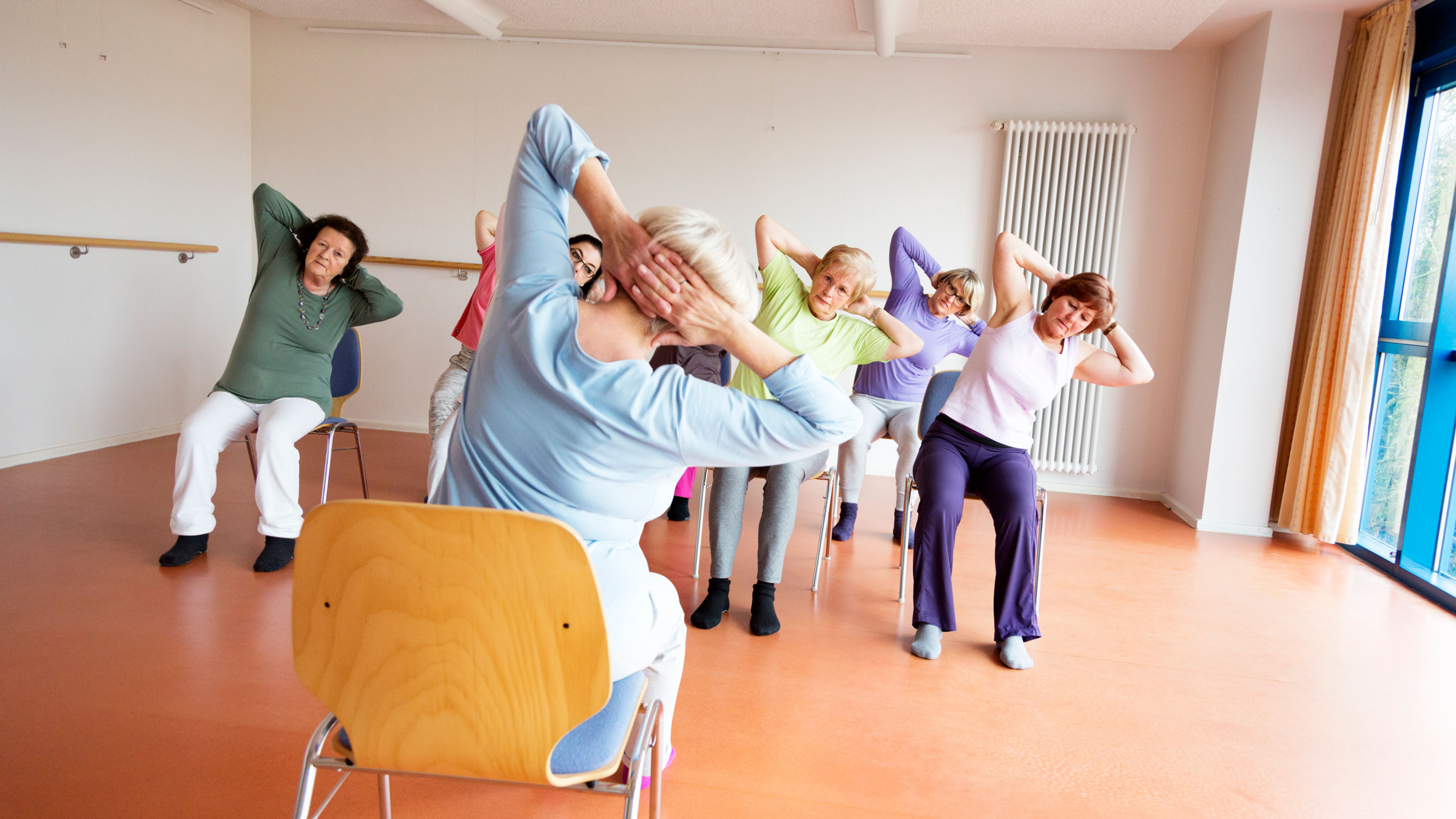
Credit: www.goodrx.com
Safety First: Exercise Without Risk
Exercising is vital for seniors, but safety is paramount. Seniors can stay active without risking injury. It’s essential to focus on safe, chair-based exercises. These tailor-made workouts enhance flexibility, strength, and balance specifically for older adults. By emphasizing safety, seniors can enjoy the benefits of physical activity without fear.
Guidelines For Preventing Injury
Start with these tips:
- Consult your doctor before beginning any exercise routine.
- Warm up thoroughly to prepare muscles and joints.
- Choose a sturdy chair that doesn’t wobble.
- Maintain good posture to reduce strain on your body.
- Use slow, smooth movements to control each exercise.
- Wear comfortable clothing and supportive shoes.
- Stay hydrated by drinking water before, during, and after exercises.
Knowing When To Pause Or Modify Exercises
Recognizing limits is crucial. Here are signs to watch for:
| Sign | Action |
|---|---|
| Pain or discomfort | Stop the exercise immediately. |
| Extreme fatigue | Take a break and rest. |
| Dizziness or breathlessness | Pause and breathe deeply. |
| Loss of balance | Hold onto the chair or avoid the exercise. |
Modify workouts to fit your comfort level. Aim for consistency rather than intensity. If you feel pain or fatigue, reduce the range of motion or frequency. Stay in tune with your body and adjust as needed.
Progress And Goal Setting In Your Senior Years
Fitness doesn’t retire when you do; setting goals and tracking progress keep seniors active and healthy. Seated and chair exercises can empower seniors to maintain flexibility, strength, and balance. Embracing progress and goals in later years encourages a continued zest for life. With the support of tracking methods and realistic targets, exercise becomes both a habit and a joy.
Tracking Fitness Progress Over Time
As seniors engage in seated and chair exercises, it’s crucial to monitor improvements. Doing so helps maintain motivation and health. Here’s a simple way to track fitness progress:
- Document daily activities: Use a notebook or digital app to record exercise details.
- Measure results: Count repetitions, monitor time spent, or note endurance levels.
- Observe health changes: Pay attention to how exercise affects mood, sleep, and overall well-being.
Consistent tracking exposes subtle improvements, transforming small wins into major triumphs over time.
Setting Realistic And Achievable Exercise Goals
Goal setting is vital for staying on course. Here’s how seniors can set achievable exercise targets:
- Start with simple goals: Focus on easily attainable objectives to boost morale.
- Be specific: Clearly define what success looks like, such as “I will perform seated leg lifts 10 times.”
- Reassess often: Adjust goals to remain challenging yet attainable.
Realistic goals tethered to personal ability ensure a safe, satisfying journey through senior fitness.

Credit: www.storypoint.com
Frequently Asked Questions Of Seated And Chair Exercises For Seniors
Is There A Free App For Chair Exercises For Seniors?
Yes, “Chair Exercises for Seniors” by Timber is a free app offering a variety of seated workouts for older adults.
Do Chair Exercises Work For Seniors?
Yes, chair exercises are effective for seniors, improving flexibility, strength, and balance while reducing the risk of falls.
What Is The 28 Day Chair Exercise Program For Seniors?
The 28 day chair exercise program for seniors is a low-impact workout routine designed to improve mobility, strength, and balance, using a chair for support and stability.
Do Chair Exercises Really Work?
Yes, chair exercises can be effective for improving strength, flexibility, and circulation, especially for those with limited mobility.
Conclusion
Embarking on a journey of fitness and health doesn’t have to be daunting for seniors. Seated and chair exercises offer a safe, effective way to enhance mobility, strength, and overall well-being. By incorporating these simple workouts into daily routines, older adults can enjoy the benefits of physical activity without the risks.
Start small, stay consistent, and embrace a more active, healthier lifestyle at any age.
